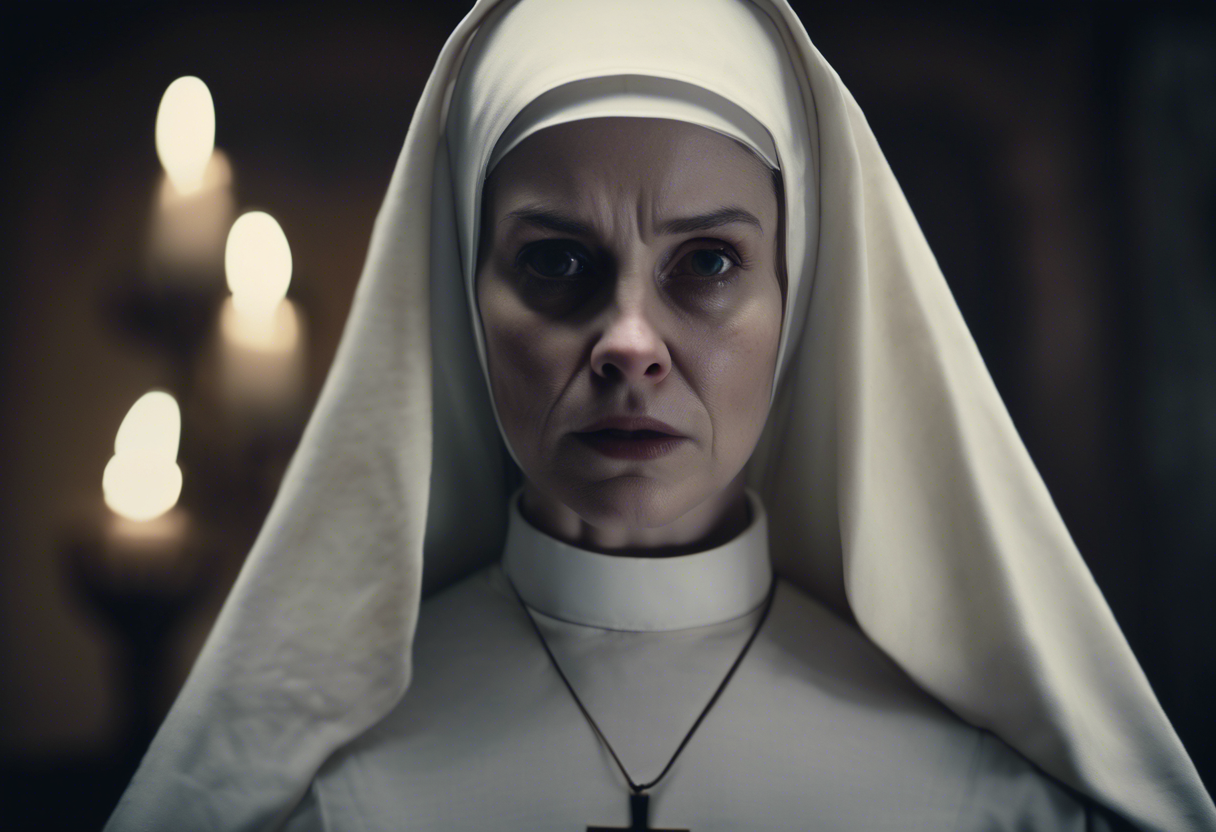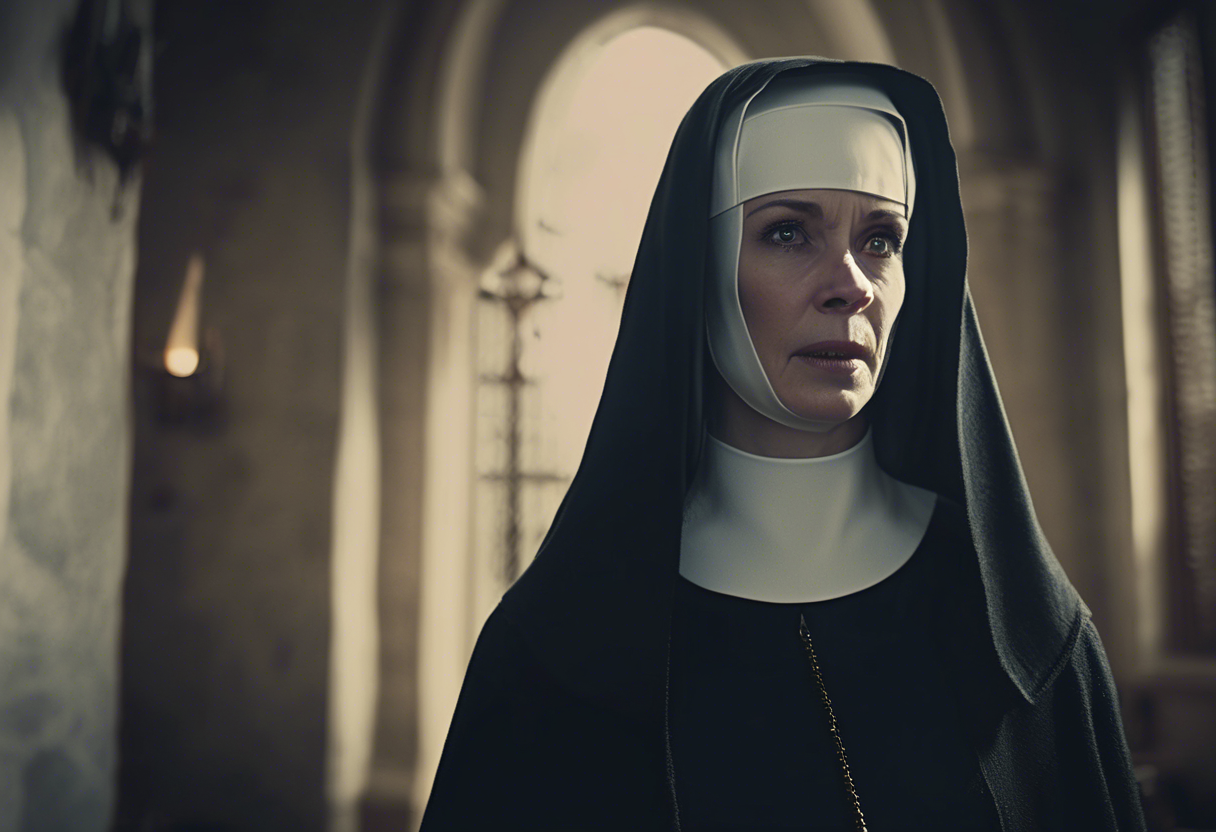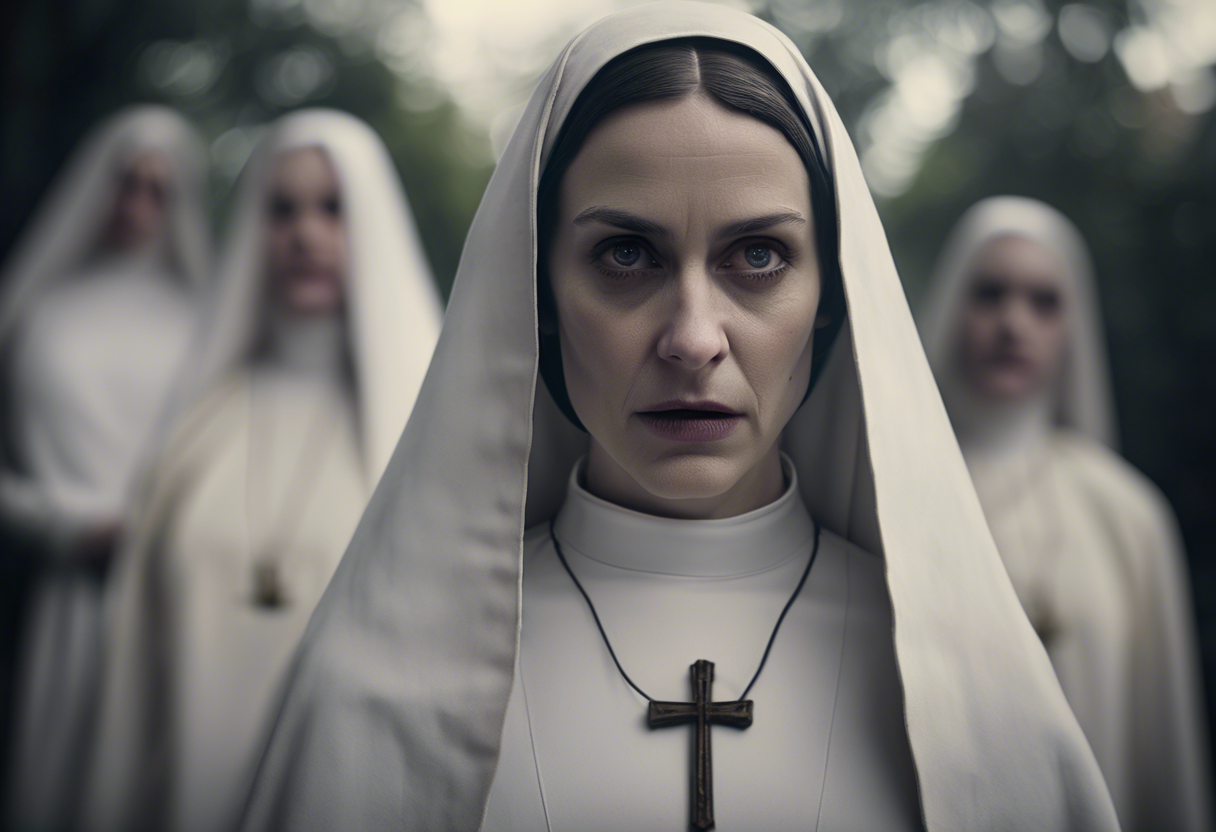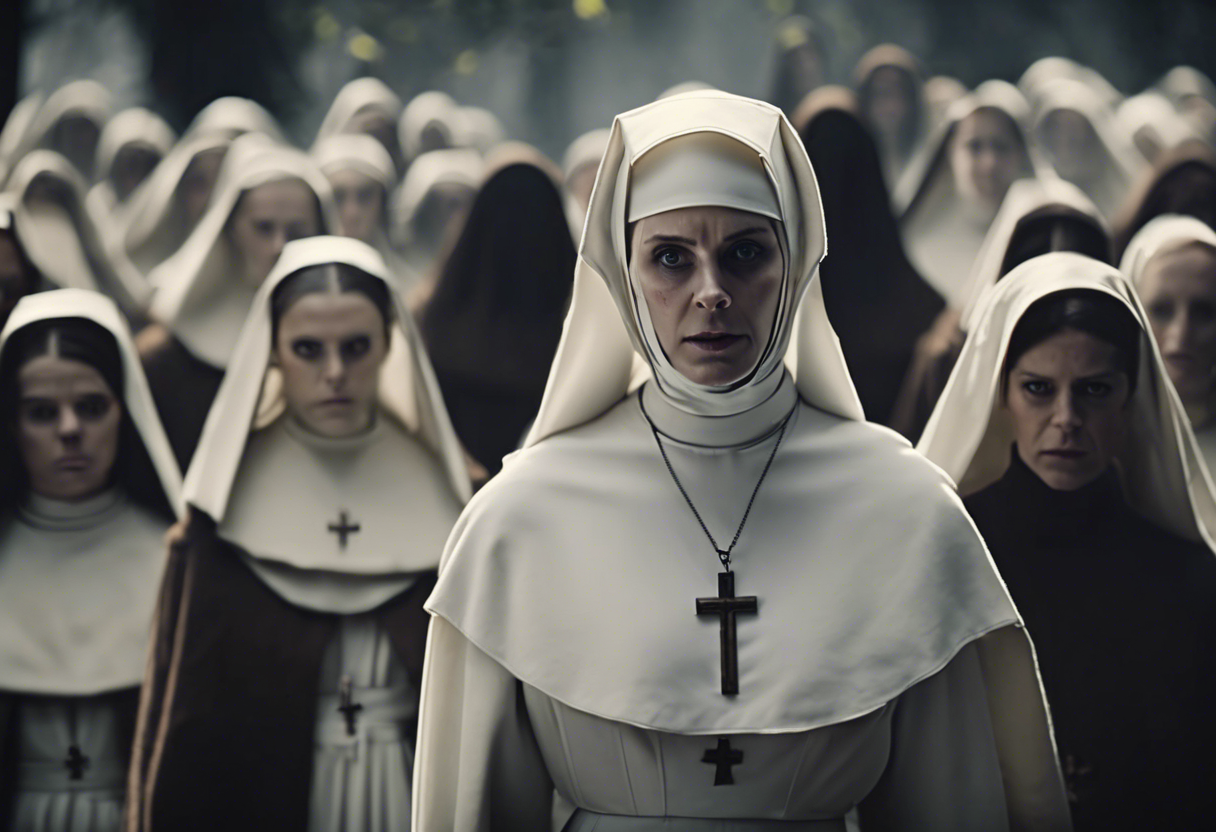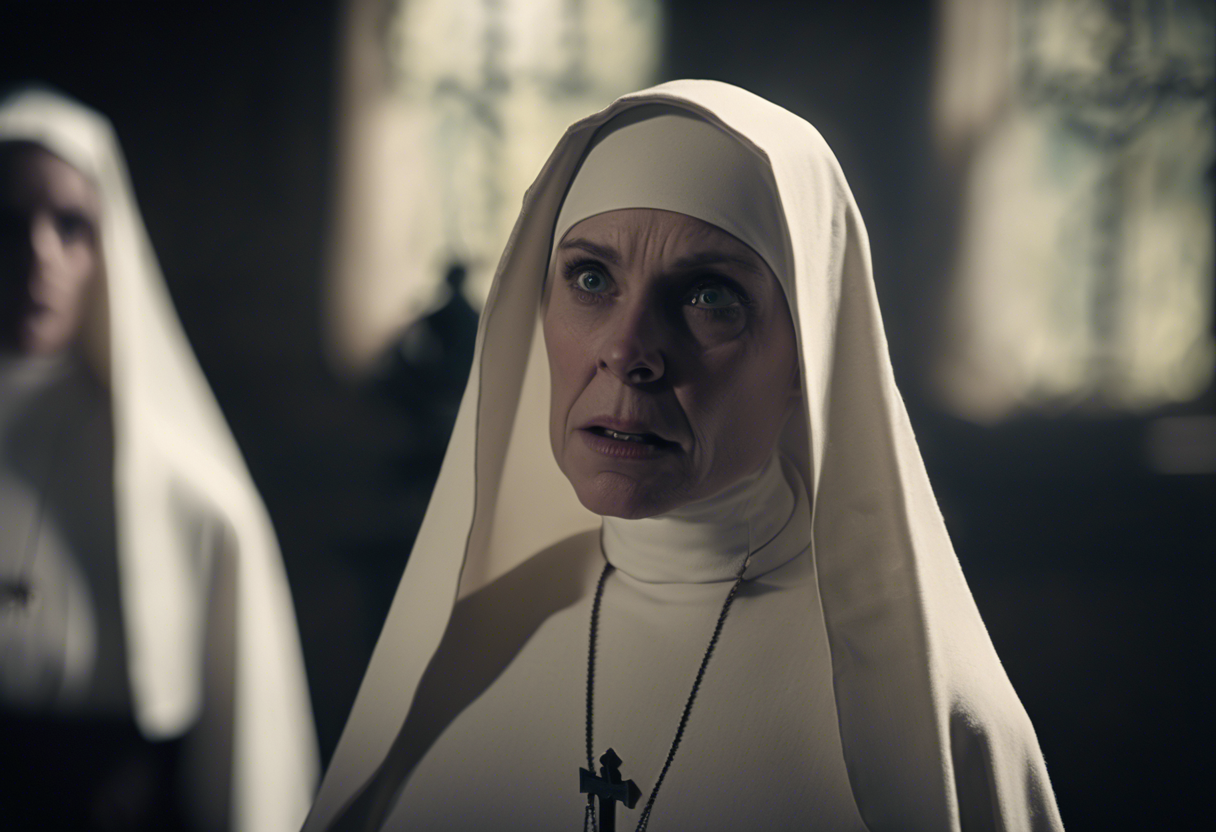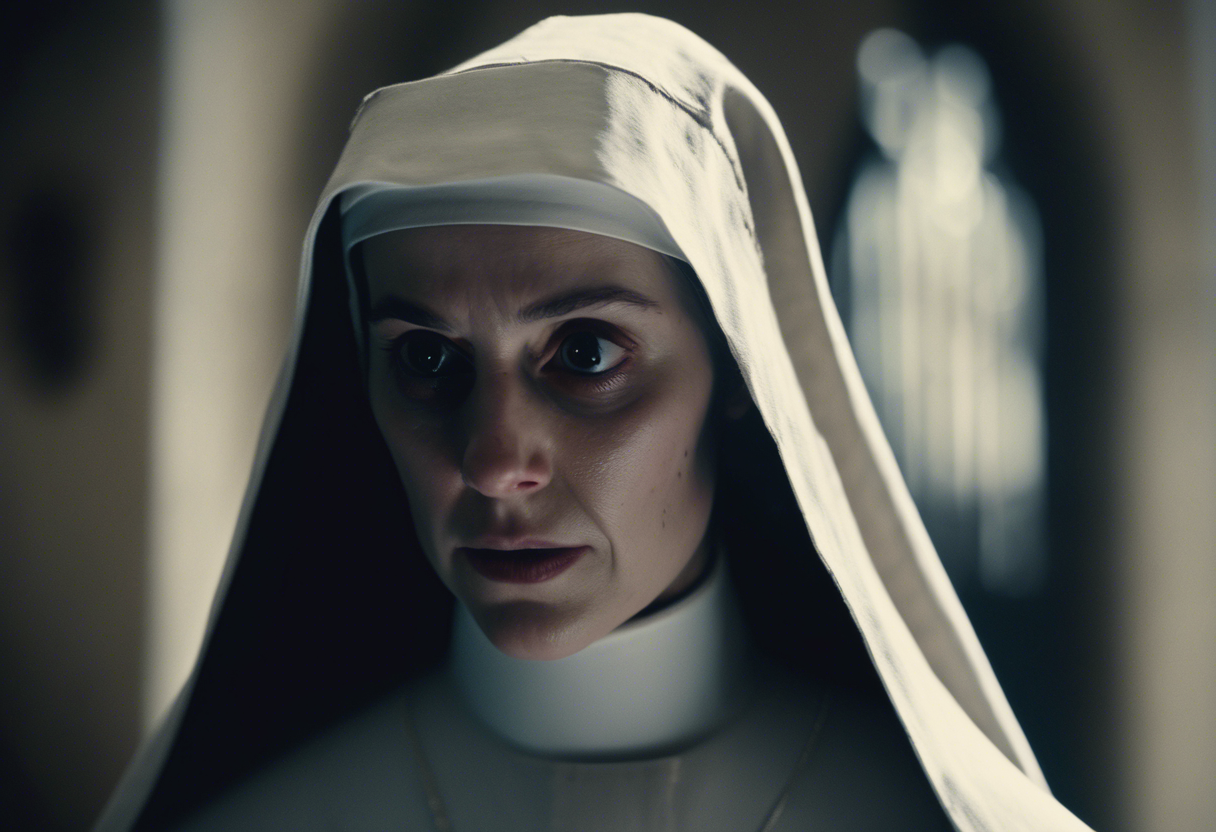Contents
The Nun II: Continuation and Depth in Gothic Horror
Introduction
The Nun II is a 2023 American gothic supernatural horror film directed by Michael Chaves, with screenplay contributions by Ian Goldberg, Richard Naing, and Akela Cooper. Serving as a sequel to the 2018 film The Nun, itself a spin-off from The Conjuring universe, The Nun II furthers the dark narrative around the demonic entity Valak, the titular “demon nun.” Produced and distributed by Warner Bros. Pictures, the film was released worldwide in 2023, expanding the gothic atmosphere and mythos established in its precursor.
This installment distinguishes itself within the horror genre through its emphasis on religious symbolism, period setting of mid-20th century France, and deepening exploration of the supernatural battle between holy figures and malevolent forces. It brings back Sister Irene (Taissa Farmiga), who previously confronted Valak, and introduces new characters, replaying and escalating the conflict in a more intricate narrative that balances suspense, religious horror, and emotional resonance [2][4][5].
Plot Summary
Set in 1956–1957 France, The Nun II opens with eerie scenes at a church where a young boy named Jacques witnesses a violent supernatural attack resulting in the immolation of Father Noiret. The demonic Valak descends ominously on the scene, signaling the return of ancient evil [1][4].
Sister Irene, now a more seasoned nun, joins a new coven and befriends Sister Debra, a novice sister who challenges traditional convent rules. Their investigation leads them to a boarding school once a monastery-turned-winery, run by the strict and mourning Madame Laurent. The school becomes a focal point of Valak’s terror, involving staff like Maurice, and teacher Kate, along with her daughter Sophie, a victim of bullying and possession [1][2][3].
The narrative unfolds as Sister Irene and Debra discover that Valak targets the descendants of St. Lucy, an early Christian martyr whose relics—her eyes—hold mystical power. Through encounters with a librarian in the Palais des Papes, the nun duo learns that St. Lucy was miraculously unharmed by fire, with her eyes holding a divine energy that the demon covets. The stained-glass goat figure acts as a supernatural map guiding them to the relic [2].
The climax features a possession showdown with Maurice and a confrontation beneath the collapsing bell tower, where Irene’s lineage as a descendant of St. Lucy allows her to endure Valak’s flames and ultimately banish the demon through powerful prayer invoking the Words of Institution. The transformation of wine barrels into the blood of Christ symbolizes a climactic holy victory [2].
Despite the victory, the film closes with a foreboding tone as Irene watches Maurice, now freed but altered, hinting at continuing struggles [2].
Themes and Symbolism
The Nun II dives deeply into themes of faith, martyrdom, and the struggle between light and darkness. The religious iconography is explicit, utilizing Christian relics, prayers, and sacred rites as tools against evil. The story draws from the real-world legend of St. Lucy, emphasizing themes of sacrifice and divine protection.
Symbolically, the eyes of St. Lucy represent spiritual sight and purity, with Valak’s obsessive search embodying evil’s attempt to claim power through corruption. Fire acts as a dual symbol—destructive yet purifying—highlighting the contrast between the demon’s malice and Irene’s divine protection.
The motif of the stained-glass goat signals a bridge between art, faith, and the supernatural, portraying how sacred crafts carry hidden truths and power.
Brotherhood, mentorship, and religious duty permeate the dynamics between Irene, Debra, and other survivors, presenting a nuanced view of female strength and communal faith under attack [2][3].
Cultural Impact
Arriving as a successor in the popular Conjuring universe, The Nun II enriched the cultural landscape of supernatural horror by reinvigorating interest in gothic religious horror lore. Its 1950s setting, combined with modern production values, offers a distinctive ambiance that blends historical intrigue with chilling supernatural suspense.
The film revitalized the character of Valak, solidifying her as one of the most recognizable horror antagonists in contemporary cinema after her initial introduction in The Conjuring 2. Its blend of church-based demonology prompted discussions on how religious symbolism is used in horror to invoke both fear and catharsis.
The layered narrative encouraged fan theories about lineage, the nature of evil, and religious artifacts, permeating social media discussions and fan forums. Additionally, references to St. Lucy incorporated an education of lesser-known saints into popular culture.
Though not spawning a wide array of directly related spin-offs yet, The Nun II‘s influence is marked in its reinforcement of the Conjuring universe’s mythology and inspiration for renewed interest in similar gothic horror productions [2][3].
Critical Reception
The Nun II received mixed to positive reviews, with critics acknowledging its atmospheric strengths and enhanced depth compared to the original 2018 film, which was widely considered a disappointment. Taissa Farmiga’s return as Sister Irene was praised for maintaining the franchise’s continuity and emotional core.
Some critics noted the film’s improvement in pacing and suspense, while others critiqued it for falling into familiar horror tropes and predictability. The storyline’s heavy use of religious motifs divided opinions between those who saw it as richly thematic and those who found it conventionally melodramatic.
Audience reception was relatively favorable, reflected in steady box office returns and social media engagement, though The Nun II did not reach blockbuster status. The film stirred debate regarding religious representation and supernatural storytelling, with some controversy over its portrayal of demonic possession and martyrdom in a sensitive religious context.
While it did not revolutionize the horror genre, its role as a solid and atmospheric horror sequel was recognized in subsequent years, maintaining a steady fanbase within the Conjuring franchise devotees [3][5].
Legacy
The Nun II holds a distinct place in the canon of ecclesiastical horror films by deepening the mythology of one of the genre’s recent iconic demons, Valak. It demonstrates how sequels can expand narrative worlds by weaving historical and spiritual symbolism with supernatural thrills.
Filmmakers have noted the film’s gothic aesthetic and integration of sacred relic lore as influential in emerging horror projects striving for atmospheric and thematic complexity beyond jump scares.
The enduring visual iconography of Valak—the black habit, sunken eyes, and spectral presence—continues to inspire costume design, fan art, and horror conventions. Sister Irene’s characterization as a strong yet vulnerable female protagonist offers a model for multifaceted heroism in faith-based horror narratives.
The Nun II’s contribution to the continuity and expansion of the Conjuring universe secures its relevance as a narrative bridge and atmospheric deepening, ensuring its place in the broader story arc and in cinematic history as a noteworthy gothic horror sequel [2][5].

